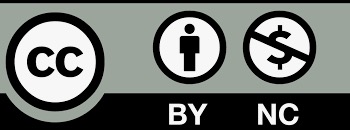Published
2025-03-28
Section
Research Articles
License
Copyright (c) 2025 Xinbo Huang, Mohd Zakhiri bin Md. Nor, Zuryati Mohamed Yusoff, Zhaowei Liang

This work is licensed under a Creative Commons Attribution-NonCommercial 4.0 International License.
The journal adopts the Attribution-NonCommercial 4.0 International (CC BY-NC 4.0), which means that anyone can reuse and redistribute the materials for non-commercial purposes as long as you follow the license terms and the original source is properly cited.
Author(s) shall retain the copyright of their work and grant the Journal/Publisher rights for the first publication with the work concurrently licensed since 2023 Vol.8 No.2.
Under this license, author(s) will allow third parties to download, reuse, reprint, modify, distribute and/or copy the content under the condition that the authors are given credit. No permission is required from the authors or the publisher.
This broad license intends to facilitate free access, as well as the unrestricted use of original works of all types. This ensures that the published work is freely and openly available in perpetuity.
By providing open access, the following benefits are brought about:
- Higher Visibility, Availability and Citations-free and unlimited accessibility of the publication over the internet without any restrictions increases citation of the article.
- Ease of search-publications are easily searchable in search engines and indexing databases.
- Rapid Publication – accepted papers are immediately published online.
- Available for free download immediately after publication at https://esp.as-pub.com/index.php/ESP

Copyright Statement
1.The authors certify that the submitted manuscripts are original works, do not infringe the rights of others, are free from academic misconduct and confidentiality issues, and that there are no disputes over the authorship scheme of the collaborative articles. In case of infringement, academic misconduct and confidentiality issues, as well as disputes over the authorship scheme, all responsibilities will be borne by the authors.
2. The author agrees to grant the Editorial Office of Environment and Social Psychology a licence to use the reproduction right, distribution right, information network dissemination right, performance right, translation right, and compilation right of the submitted manuscript, including the work as a whole, as well as the diagrams, tables, abstracts, and any other parts that can be extracted from the work and used in accordance with the characteristics of the journal. The Editorial Board of Environment and Social Psychology has the right to use and sub-licence the above mentioned works for wide dissemination in print, electronic and online versions, and, in accordance with the characteristics of the periodical, for the period of legal protection of the property right of the copyright in the work, and for the territorial scope of the work throughout the world.
3. The authors are entitled to the copyright of their works under the relevant laws of Singapore, provided that they do not exercise their rights in a manner prejudicial to the interests of the Journal.
About Licence
Environment and Social Psychology is an open access journal and all published work is available under the Creative Commons Licence, Authors shall retain copyright of their work and grant the journal/publisher the right of first publication, and their work shall be licensed under the Attribution-NonCommercial 4.0 International (CC BY-NC 4.0).
Under this licence, the author grants permission to third parties to download, reuse, reprint, modify, distribute and/or copy the content with attribution to the author. No permission from the author or publisher is required.
This broad licence is intended to facilitate free access to and unrestricted use of original works of all kinds. This ensures that published works remain free and accessible in perpetuity. Submitted manuscripts, once accepted, are immediately available to the public and permanently accessible free of charge on the journal’s official website (https://esp.as-pub.com/index.php/ESP). Allowing users to read, download, copy, print, search for or link to the full text of the article, or use it for other legal purposes. However, the use of the work must retain the author's signature, be limited to non-commercial purposes, and not be interpretative.
Click to download <Agreement on the Licence for the Use of Copyright on Environmental and Social Psychology>.
How to Cite
Psychological harm induced by generative AI and its legal remedies
Xinbo Huang
School of Law, Nanchang Institute of Technology, Nanchang, 330044, China; School of Law, University Utara Malaysia, 06010 UUM, Sintok, Kedah, Malaysia
Mohd Zakhiri bin Md. Nor
Islamic Business School, University Utara Malaysia, 06010 UUM, Sintok, Kedah, Malaysia
Zuryati Mohamed Yusoff
School of Law, University Utara Malaysia, 06010 UUM, Sintok, Kedah, Malaysia
Zhaowei Liang
School of Law, Guilin University, Guilin, 541006, China
DOI: https://doi.org/10.59429/esp.v10i3.3554
Keywords: artificial intelligence (AI), generative AI, psychological harm, legal remedies
Abstract
The rapid advancement of generative artificial intelligence (AI) has transformed human interaction with technology, raising critical concerns about its psychological impact. While AI-driven tools offer unprecedented convenience and efficiency, they also pose risks to mental well-being. This study adopts a qualitative research approach, integrating case analysis and library-based data analysis. Thematic and content analysis methods are employed to investigate the operational mechanisms of generative AI and its direct and indirect effects on human psychology. The findings reveal that AI-generated psychological harm is difficult to quantify, often subjective, and influenced by the evolving nature of human-AI interactions. Furthermore, the study identifies gaps in existing legal frameworks and highlights the complexities of attributing liability in cases of AI-induced psychological damage. This research proposes legal remedies encompassing emotional distress compensation, regulatory oversight, preventative standards, and AI liability insurance. By bridging the gap between AI innovation and mental health protection, this study contributes to the growing discourse on AI governance and provides a foundation for future legal and policy developments to safeguard individuals from AI-induced psychological harm.
References
[1]. 1.Hacker, P., Engel, A., & Mauer, M. (2023, June). Regulating ChatGPT and other large generative AI models. In Proceedings of the 2023 ACM Conference on Fairness, Accountability, and Transparency (pp. 1112-1123). https://doi.org/10.48550/arXiv.2302.02337.
[2]. 2.Alanezi, F. (2024). Assessing the effectiveness of ChatGPT in delivering mental health support: A qualitative study. Journal of Multidisciplinary Healthcare, 17, 461–471.
[3]. 3.Affandi, S., Ishaq, M. I., Raza, A., Talpur, Q.-u.-a., & Ahmad, R. (2025). AI assistant is my new best friend! Role of emotional disclosure, performance expectations, and intention to reuse. Journal of Retailing and Consumer Services, 82, 104087. https://doi.org/10.1016/j.jretconser.2024.104087.
[4]. 4.Wang, F., Gai, Y., & Zhang, H. (2024). Blockchain user digital identity big data and information security process protection based on network trust. Journal of King Saud University - Computer and Information Sciences, 36(4), 102031. https://doi.org/10.1016/j.jksuci.2024.102031
[5]. 5.Liang, B., Wang, Y., Huo, W., Song, M., & Shi, Y. (2025). Algorithmic control as a double-edged sword: Its relationship with service performance and work well-being. Journal of Business Research, 189, 115199.
[6]. 6.Salleh, A, & Qadar, S. (2024). Artificial intelligence has psychological impacts our brains might not be ready for, expert warns. ABC News. https://www.abc.net.au/news/health/2024-05-01/artificial-intelligence-ai-psychology-mental-health/103753940). Accessed 3 October 2024.
[7]. 7.Johnson, D. (2024). AI can trigger psychological side effects. ISHN, 14 March. https://www.ishn.com/articles/114113-ai-can-trigger-psychological-side-effects. Accessed 3 October 2024.
[8]. 8.Gerlich, M. (2025). AI tools in society: Impacts on cognitive offloading and the future of critical thinking. Societies, 15(1), 6. https://doi.org/10.3390/soc15010006.
[9]. 9.Creswell, J. W. (2017). Research design: Qualitative, quantitative, and mixed methods approach. Sage.
[10]. 10.He, P., & Liu, J. K. (2024). A study on the intellectual property issues of generative artificial intelligence products from the perspective of jurisdictional coordination: A case study of ChatGPT. Legal Research, (3).
[11]. 11.Lords Committee. (2020). AI in the UK: Ready, willing and able? House of Lords Select Committee on Artificial Intelligence, Parliament of the United Kingdom. Report Session 2017-19. https://publications.parliament.uk/pa/ld201719/ldselect/ldai/100/100.pdf. Accessed 21 November 2024.
[12]. 12.High-Level Expert Group on Artificial Intelligence. (2019). A Definition of AI: Main Capabilities and Scientific Disciplines, Independent High-Level Expert Group on Artificial Intelligence Set Up By The European Commission. https://www.aepd.es/sites/default/files/2019-12/ai-definition.pdf.Accessed 21 November 2024.
[13]. 13.Turner. J. (2019). Robot rules: regulating artificial intelligence. Palgrave Macmillan, London, pp 70–75.
[14]. 14.Revolidis I, & Dahi, A. (2018). The peculiar case of the mushroom picking robot: extra-contractual liability in robotics. In: Corrales M, Fenwick M, Forgó N (eds) Robotics, AI and the future of law. Springer, Singapore, p 59.
[15]. 15.IBM Cloud Education. (2020). Strong AI. IBM. https://www.ibm.com/cloud/learn/strong-ai. Accessed 3 Oct 2024
[16]. 16.Kerekes, L. (2023). Aspects of the regulation of artificial intelligence. Indones Private Law Rev 4(2):93–104.
[17]. 17.Generative models: VAEs, GANs, diffusion, transformers, NeRFs. https://www.techtarget.com/searchenterpriseai/tip/Generative-models-VAEs-GANs-diffusion-transformers-NeRFs
[18]. 18.Singh, A., & Ogunfunmi, T. (2021). An overview of variational autoencoders for source separation, finance, and bio-signal applications. Entropy, 24(1), 55.
[19]. 19.Dubey, S. R., & Singh, S. K. (2024). Transformer-based generative adversarial networks in computer vision: A comprehensive survey. IEEE Transactions on Artificial Intelligence.
[20]. 20.Yang, L., Zhang, Z., Song, Y., Hong, S., Xu, R., Zhao, Y., ... & Yang, M. H. (2023). Diffusion models: A comprehensive survey of methods and applications. ACM Computing Surveys, 56(4), 1-39.
[21]. 21.Tortora, L. (2024). Beyond Discrimination: Generative AI Applications and Ethical Challenges in Forensic Psychiatry. Frontiers in Psychiatry, 15, 1346059.
[22]. 22.Kasneci, E., Seßler, K., Küchemann, S., Bannert, M., Dementieva, D., Fischer, F., ... & Kasneci, G. (2023). ChatGPT for good? On opportunities and challenges of large language models for education. Learning and individual differences, 103, 102274.
[23]. 23.Lin, J. C., Younessi, D. N., Kurapati, S. S., Tang, O. Y., & Scott, I. U. (2023). Comparison of GPT-3.5, GPT-4, and human user performance on a practice ophthalmology written examination. Eye, 37(17), 3694-3695.
[24]. 24.Open AI. (2023). GPT-4 technical report. arXiv.CL/2303.08774.
[25]. 25.Huang, S., Lai, X., Ke, L., Li, Y., Wang, H., Zhao, X., Dai, X., & Wang, Y. (2024). AI Technology Panic—Is AI Dependence Bad for Mental Health? A Cross-Lagged Panel Model and the Mediating Roles of Motivations for AI Use Among Adolescents. Psychology Research and Behavior Management. 17, 1087–1102. https://doi.org/10.2147/prbm.s440889.
[26]. 26.Atillah, I. E. (2023). Man ends his life after an AI chatbot “encouraged” him to sacrifice himself to stop climate change. Euronews. https://www.euronews.com/next/2023/03/31/man-ends-his-life-after-an-ai-chatbot-encouraged-him-to-sacrifice-himself-to-stop-climate-.
[27]. 27.Hunt, E. (2019). Tay, Microsoft’s AI chatbot, gets a crash course in racism from Twitter,' The Guardian, 9 September. <https://www.theguardian.com/technology/2016/mar/24/tay-microsofts-ai-chatbot-gets-a-crash-course-in-racism-from-twitter?CMP=twt_a-technology_b-gdntech>. Accessed 3 October 2024.
[28]. 28.Metz, R. (2024). Why Microsoft Accidentally Unleashed a Neo-Nazi Sexbot. MIT Technology Review. https://www.technologyreview.com/2016/03/24/161424/why-microsoft-accidentally-unleashed-a-neo-nazi-sexbot/.
[29]. 29.American Psychological Association. (2023). Worries about AI, surveillance at work may be connected to poor mental health. APA News, 7 September. Available at: https://www.apa.org/news/press/releases/2023/09/artificial-intelligence-poor-mental-health. Accessed 3 October 2024.
[30]. 30.Page v Smith, [1996] 1 AC 155 (House of Lords).
[31]. 31.Giliker, P. (2018). A ‘new’ head of damages: Damages for mental distress in the English law of torts. The Cambridge Law Journal, 77(1), 34–58.
[32]. 32.Teff, H. (2008). Causing Psychiatric and Emotional Harm: Reshaping the Boundaries of Legal Liability. Bloomsbury Publishing.
[33]. 33.Kidd, R.F., Saks, M.J., & Saxe, L. (1986). Advances in Applied Social Psychology, Volume 3. Psychology Press, pp. 220–222.
[34]. 34.Jenny, S. (2017). Tort Law: Text, Cases, and Materials. Oxford University Press, 2017, p.693.
[35]. 35.Jason, N. V. (2016). Damages and Human Rights. Bloomsbury Publishing, p. 51.
[36]. 36.Carson D & Bull, R. (2003). Handbook of Psychology in Legal Contexts. John Wiley & Sons.
[37]. 37.Grierson A B, Hickie I B, Naismith S L, Scott J. (2016). The role of rumination in illness trajectories in youth: Linking trans-diagnostic processes with clinical staging models. Psychological Medicine, 46(12), 2467-2484. https://doi.org/10.1017/S0033291716001392
[38]. 38.Stretton, D. (2006). Harriton v Stephens; Waller v James: Wrongful Life and the Logic of Non-Existence. Melbourne University Law Review, 30(3), 972. Retrieved from [AustLII](https://www.austlii.edu.au/cgi-bin/viewdoc/au/journals/MelbULawRw/2006/31.html).
[39]. 39.Young, G., Kane, A. W., & Nicholson, K. (2007). Causality of Psychological Injury: Presenting Evidence in Court. Springer Science & Business Media, pp. 17–21.
[40]. 40.Melton, G. B., Petrila, J., Poythress, N. G., & Slobogin, C. (2007). Psychological Evaluations for the Courts, Third Edition: A Handbook for Mental Health Professionals and Lawyers. Guilford Press, p. 410.







